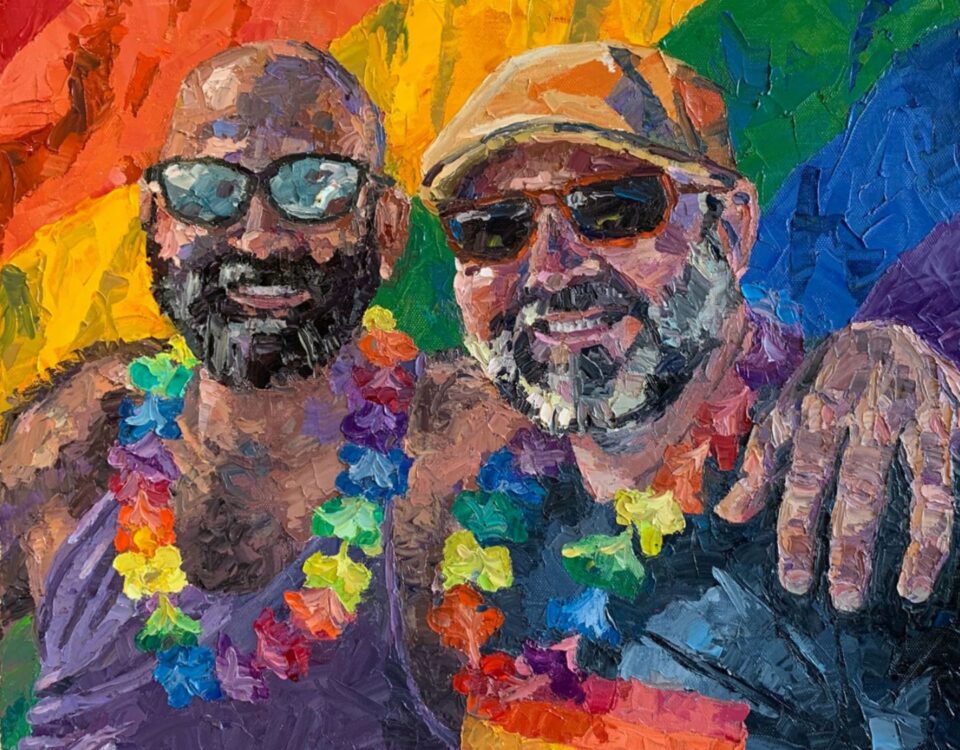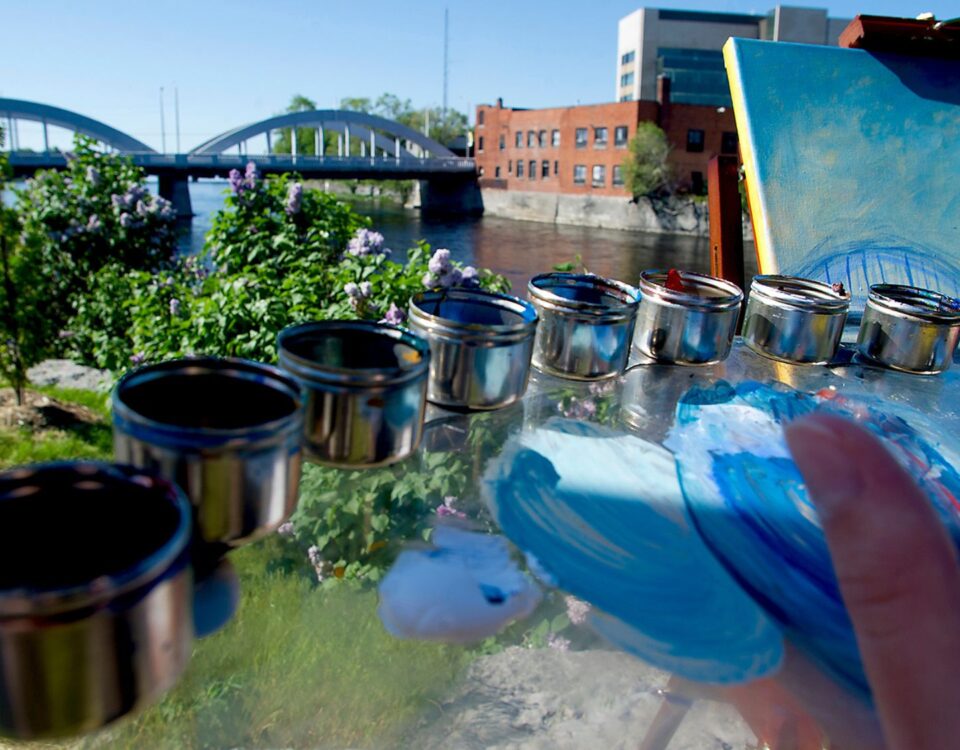
The history of tattoos goes way back. The oldest preserved tattoos come from Ötzi the Iceman, a 5,300-year-old mummified body discovered in the glacial mountains of Italy.
Tattoos are found around the world, and can’t be traced to one origin or common purpose. Under the Roman Empire, slaves were tattooed as a mark of ownership, but in the Pacific Islands tattoos were esteemed symbols of status. Sailors used tattoos to commemorate achievements at sea—the sparrow marked 5,000 nautical miles, a King Neptune meant crossing the equator— while circus performers displayed their tattoos as curiosities.
Tattoos are the emblems of bikers and criminals, but also instruments of healing, transforming scars from marks of pain or shame to ones of beauty. Over time tattoos have meant many things: rebellion, counterculture, affiliation, honour or simply fashion.
But are tattoos art?
Consider the language of tattooing: the body as a “blank canvas.” Like traditional art, good composition is the foundation of a successful tattoo. A painting and a tattoo share the same design elements: scale, line weight, texture, gradient, colour theory, contrast, flow, points of interest, texture, and cohesion. There are needles just like fine pens, Sharpie markers, paint brushes, and even ones that imitate a spray can.
But doing artwork on a human body differs from any other medium: there is no defined border to the canvas, and the surface of the body changes inch by inch. Age, texture, blemishes and skin tone all affect the rendering of the tattoo. Then there’s placement: how the tattoo flows and works with the contours, shape and movement of the body.
Just as there are many styles of art, there are dozens of tattoo styles— watercolour, abstract, portrait, fine line, geometric, realism, illustrative, cartoon, to name a few—as well as American Traditional (aka Old School), New School, Neo-Traditional, Japanese and Tribal, each with its own rules, symbols and aesthetic. Tattoo trends come and go, and artists may be versatile in many styles, though most have a creative preference. Tattoos are as individual as the artist, and each will have a distinct portfolio.
While conventional art hangs on a wall, human bodies are the gallery for tattoo art; Japanese tattoo master Horiyoshi III insists his drawings only come to life on skin. Tattoos cannot be appraised, bought or sold, subverting the traditional gallery business model.
While displaying tattoos used to carry a social stigma (they were even illegal in New York until 1997), people of all ages are now getting inked on all parts of their body, though hands, face and neck are still considered career-limiting. Today people get tattoos as memorials, to commemorate a life moment or event, or simply as decoration.
Some argue tattooing is like a trade or a craft, with on-the-job training through an apprenticeship, and a strong connection to history, materials, skill and process. There’s also an element of service; while a painter is a solitary pursuit, a tattoo artist must collaborate in an intimate way with her client.
To answer the question, “Are tattoos art?” we asked three local tattoo artists to share their work. You be the judge.

Feminink
For Faye, the 30-something owner of Feminink, her fascination with tattoos began (she reluctantly admits) while watching Miami Ink as a young teen. But her love for art goes further back. Ever since she could hold a crayon, she’s drawn on everything – walls, inside drawers, under the kitchen table – and her first “client” was a teddy called a “doodle bear.”
She got her first tattoo at 16 or 17, started tattooing professionally at 19, and in 2017 opened her shop. She calls her main style “real-ish-tic.” Not like a cartoon, but not photo-realism either. She rarely looks at a reference photo: “I like to just trust that my hands know what to do.” Now that she’s been tattooing for so long, she finds skin the easiest medium to work with. “I struggle to achieve the same result with paint on canvas or graphite on paper that I used to,” she says.
Her clientele is primarily women of all ages, and most of her work is custom, though she offers small “flash-style” tattoos on walk-in Wednesdays. Her advice for someone thinking of getting inked is; finger tattoos are a trend to avoid as they don’t age well. But more importantly, “Go to someone whose style you love and trust them. You’ll both be happier for it.”

Wild Ink Studios
When James was a little kid, he’d draw the same stuff as other little kids – dinosaurs, tanks and tractors – but different. “When I looked at a picture of an elephant, I’d see blue tones throughout. And so I drew elephants blue. The kids laughed at me, but the teacher looked at me different,” he says. And so started his fascination with colour theory.
Then when he got his first tattoo at 15 – a little blue sun on his shoulder that he still has today – “I just thought I could do a better job,” he says. “I’ve always been interested in the art world and always found tattoos quite fascinating. I love the history behind them.”
He didn’t start tattooing professionally until he was 24 or 25, alternating between working as a classically-trained chef and an artist. Tattooing offered him a taste of adventure (and got him out of the kitchen). He did a tour across Canada that lasted four years, working everywhere from Ottawa to Kamloops, BC, before landing in Niagara Falls for a year at Hart & Huntington Tattoo Co., founded by Carey Hart, aka Pink’s husband. He came back home about six years ago.
He can basically tattoo in every style and everywhere, but gets most excited with comic book-style art – Marvel, DC, Spiderman, Batman. “Anything that has a very defined line to it,” he says. “I love when people know exactly what they want.”

East Coast Tattoo & Piercing
Izzy, owner of East Coast Tattoo & Piercing, has been fascinated with tattoos since she was a toddler. “It didn’t matter if you were a big scary biker dude, I was talking to you,” she says. Later, she was the kid who got in trouble for drawing on her friends. Her mum was an artist, and Izzy would “see this beautiful art on canvas, and to me, skin was canvas as well.”
At 21 she moved from Edmonton to Nova Scotia, got her second tattoo and then just “never left the shop.” There weren’t many women tattoo artists then, so she wasn’t actually an apprentice. “I was just a permanent fixture in the shop for about five years.”
Twenty years later, she and her husband run their own shop, each with their own style. Izzy likes semi-realism, while Paul specializes in old school, traditional, and Japanese. A lot of their clients are military members who suffer from PTSD, and she also runs a program with human trafficking victims. “We’ve realized over the years that tattooing is beneficial for mental health issues,” she says. “We can’t save everyone with tattoos. But if we can save one person out of ten, that is a big win.”


